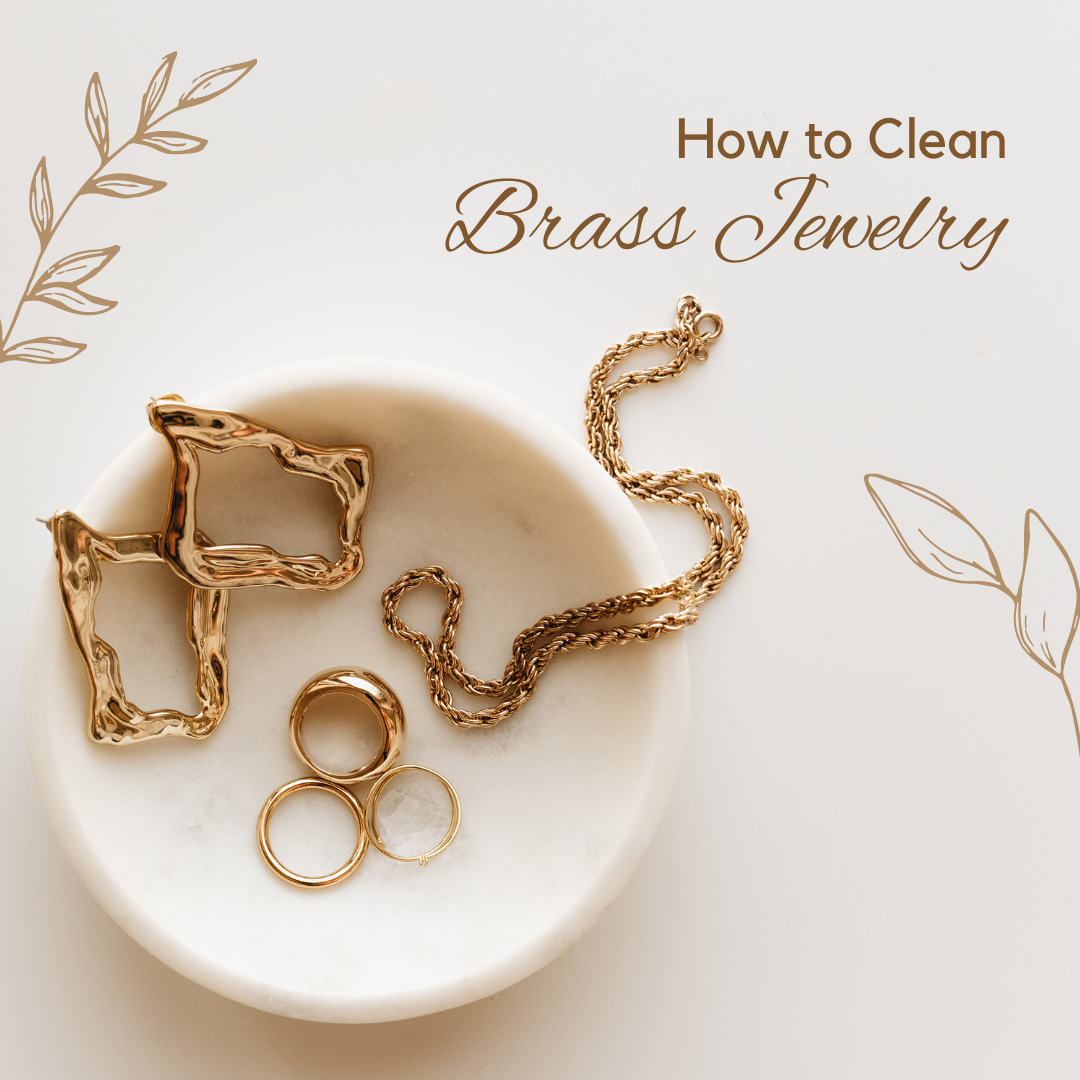Brass jewelry is a popular choice for its affordability and unique aesthetic appeal. However, over time, it can become tarnished and lose its shine. Fortunately, cleaning brass jewelry is a simple process that can restore its luster and keep it looking great for years to come. In this blog, we'll go over some tips on how to clean brass jewelry.
Materials Needed:
- Mild dish soap
- Warm water
- Soft-bristled toothbrush
- Microfiber cloth
- Lemon juice or vinegar (optional)
- Baking soda (optional)
Step-by-Step Guide:
-
Create a cleaning solution: In a bowl, mix a few drops of mild dish soap with warm water. You can also add a tablespoon of lemon juice or vinegar for extra cleaning power. Alternatively, you can make a paste with baking soda and water.
-
Soak the jewelry: Place the brass jewelry in the cleaning solution and let it soak for a few minutes.
-
Scrub gently: Use a soft-bristled toothbrush to gently scrub the jewelry, paying extra attention to any intricate details or crevices. Be sure to avoid using a hard-bristled brush, which can scratch the surface of the brass.
-
Rinse and dry: Once you have finished scrubbing, rinse the jewelry thoroughly with warm water to remove any soap residue. Dry the jewelry with a microfiber cloth, being careful not to rub too hard.
Tips:
- Avoid using harsh chemicals or abrasive materials on silver and brass jewelry, as they can damage the surface.
- Never soak jewelry that contains delicate gemstones in cleaning solutions.
- Keep your silver and brass jewelry dry and store it in a cool, dry place to prevent tarnishing.
Understanding Tarnish in Silver and Brass Jewelry
Tarnishing is a common term for oxidation. Most jewelry on the market is made from copper alloys, such as brass or sterling silver. Tarnish forms when the copper in these metals reacts with moisture and air. This reaction can lead to a greenish discoloration where the jewelry touches your skin—a result of a chemical interaction between the copper and the natural oils in your skin. While this "greening" effect is harmless and temporary, it may be more noticeable depending on your body's pH levels. Higher pH levels can lead to more frequent tarnishing and may require more regular cleaning. Diet and hormones can also influence this process.

